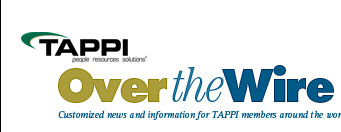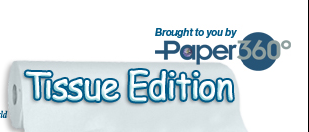The Changing Face of North American Tissue
 Print this article | Send to Colleague Print this article | Send to Colleague
By Alexandra Lauren Taylor, Pöyry Management Consulting NA
There have been significant changes in the North American tissue industry during the past five years, with more changes to come. In the past year and a half (2012 to present), nine new machines, one rebuild, and one restart have added more than 650,000 tons to the North American tissue market. In terms of pure tons of tissue, this has compensated some for the roughly 800,000 tons of tissue that was removed from the market from 2008 to 2013. Plans for more tissue machines as far out as 2016 should help recover the remainder of the lost tons. However, the industry structure has shifted with the capacity additions and removals, and several producers are poised to strengthen their position as they cater to an evolving North American consumer.
The majority of the new machines started up in the past five years have been TAD or TAD-quality (roughly 450,000 tons), and largely they have been located in the U.S. South. Additionally, with the exception of Cascades’ conversion of Candiac (Canada) PM2 to ATMOS technology, all new capacity was placed in the U.S. This new capacity, coupled with a few acquisitions, helped strengthen the position of companies like Clearwater, Cascades, Kruger, and First Quality, particularly in the at-home market. However, the tissue market continues to be dominated by Georgia-Pacific, Procter & Gamble, and Kimberly-Clark.
Although the top-three players continue to maintain their dominance, nearly 70% of the 800,000 tons lost from 2008 to 2013 came from Georgia-Pacific, Procter & Gamble, and Kimberly-Clark. The closure of five machines at Kimberly-Clark’s Everett mill and TM 16 at its Chester mill in 2012 actually pushed Kimberly-Clark to the third-largest tissue producer, down from being the second-largest after Georgia-Pacific and ahead of Procter & Gamble (however, Kimberly-Clark and Procter & Gamble are still very close in total tissue capacity). So as Top 10 companies like Clearwater, Cascades, Kruger, and First Quality were starting up new machines and making inroads into the premium tissue market, much of the space to do so was provided by the top-three players.
However, there is an interesting difference between the tons lost and the tons added in the past five years. Of the 25 machines shut down in the past five years, only three were TAD machines and only four were located in the U.S. South. Additionally, as much as 40% of the shut capacity was estimated to be for the away-from-home market. This contrasts with the new tissue machines, which are largely TAD or TAD-quality destined for the at-home market (particularly retail private label) and located in the U.S. South. So although the overall capacity in the North American tissue market is relatively stable, competition and concentration in the premium tissue segment and especially in the U.S. South has increased.
As the economy recovers the popularity of branded versus private label products will continue to develop, and opportunities for growth in the Away-from-Home market may emerge as well. It will be interesting to see which existing producers and which new producers will best be able to develop a strategy to leverage the evolving dynamic in the North American tissue market.
About the Author
Alexandra Lauren Taylor is Analyst with Pöyry Management Consulting NA Inc., Atlanta, Ga., She can be contacted by email or by phone at: 404-585-2120.
   
|
|

